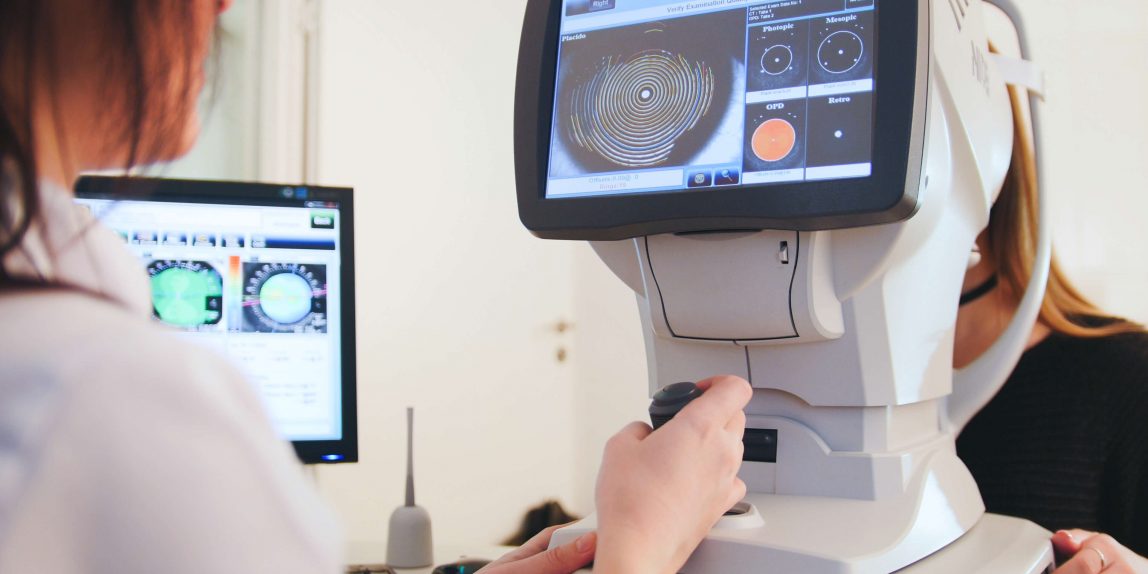Your Eyes in Safe Hands
We cannot stress enough how important eye examinations are. Even if you think there is nothing wrong with your vision, an eye examination should be a vital part of your health routine. Just from an eye examination, optometrists can detect sight-threatening diseases and underlying general health issues. Some eye diseases, such as glaucoma and cataract, can appear without any visual symptoms.
Whether you are worried about a problem or just feel that you would like a check-up, Martin Johnson Opticians can offer you the individual service that you want, tailored to match your needs. And with our incredible Optomap® retinal scanner, we can detect problems that would not easily be seen using the traditional methods in seconds.
What happens during an Eye Examination
Routine Eye Examinations are carried out by an Optometrist. Currently we allocate 40 mins for the examination so we can be really thorough and discuss all your needs. The optometrist will take any scans that are recommended and show you the results during your appointment. If we find anything that needs further investigation you may be asked to come back on another day for some more specific tests.
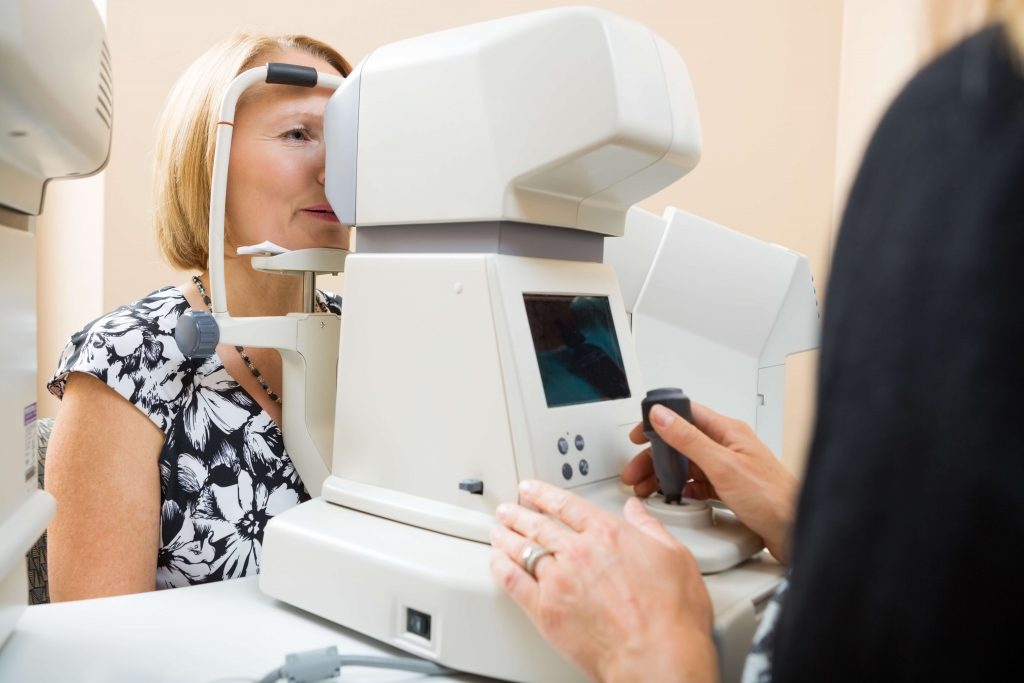
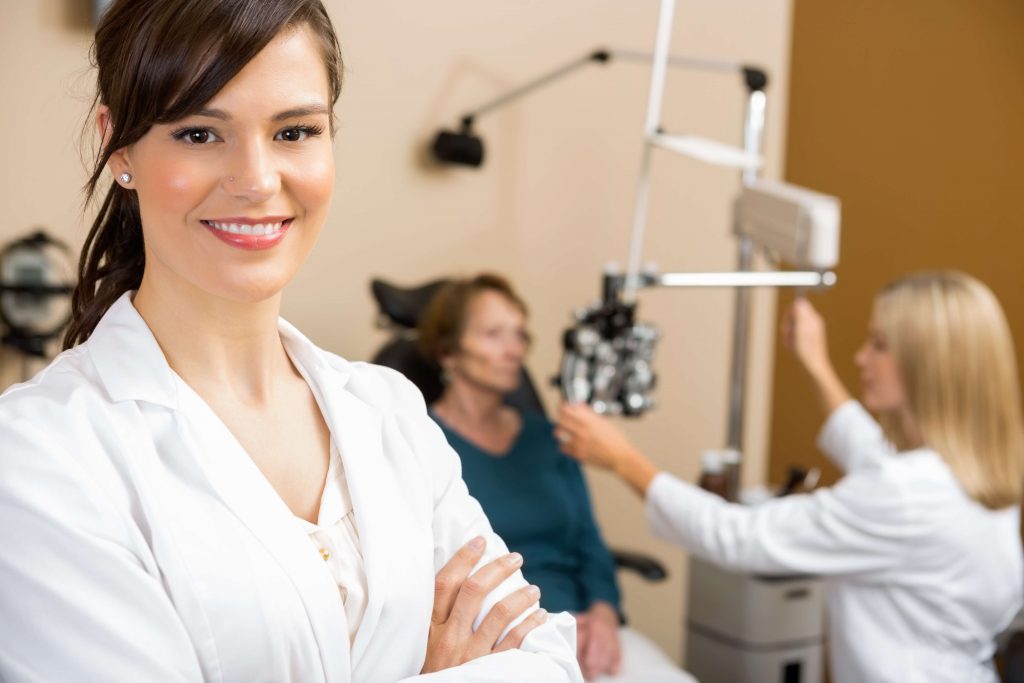
Eye Pressure
Eye pressure is always measured in the over 40 age group or if there is a family history of glaucoma. Traditionally it has been measured by blowing a puff of air into your eye which some people find quite unpleasant. Thanks to the latest innovations in technology we are happy to have upgraded to a new device which measures pressure vey quickly and painlessly called the Icare tonometer. It avoids the aerosols associated with the “puff of air’ so not only is it more accurate but safer too.
Visual fields
This test historically has been offered to all our patients over 40 as part of the standard eye examination. But due to covid , blanket testing is no longer recommended so you will only have a field test if your Optometrist feels this is necessary , for example you if you are having headaches, your eye pressure is raised or if you have a family history of glaucoma.

After the eye examination
Your optometrist will now have detailed knowledge of the health of your eyes, the standard of your vision and any special requirements that you may have. You will also be able to discuss the best form of vision correction to suit your individual lifestyle and visual needs.
At the end of the examination you will be advised of when you should have your next examination. You’ll also be given a prescription for glasses or contact lenses, or a statement which confirms that your eyes don’t need correction. If you need medical treatment for an eye condition you may be referred to your doctor or hospital.
Equipment We Use
Optomap
Martin Johnson Opticians have invested in the latest technology for the benefit of our patients and the health of their eyes. This equipment is typically found in ophthalmology departments rather than independent practices.
Optomap’s ground breaking laser scanning system has transformed the way we can examine our patients – offering a full retinal scan and meaning we can assess the health of your eyes in seconds. The Optomap scanner was developed in 2001 by Scottish-based company Optos, to worldwide acclaim.
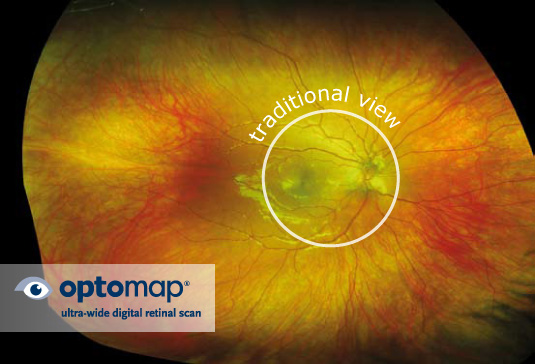
Normal eye examination enables us to see only a limited view of your retina (depending on the size of your pupils). A retinal scan produces a single digital image of up to 200º inside the eye. This enables us to check for any damage to the retina (the back of the eye) and make sure the eye is healthy.
Many eye conditions, if detected at an early stage, can be successfully treated without loss of vision.
Obtaining Optomap Retinal Images is comfortable, quick and very simple. By looking into the Optomap Eyepiece a digital image of your retina is taken in less than 1 second, generating a high-resolution image. Nothing touches your eye and you can resume normal activities immediately – it really couldn't be any simpler.
We can then use the high resolution image to diagnose any possible problems, such as early signs of potential problems including:
- Retinal tears and detachments
- Diabetic Retinopathy
- Hypertension

OCT
Optical Coherence Tomography or OCT is a non-invasive imaging test that uses light waves to take cross-section pictures of your retina, the light sensitive part of your eye. with OCT each of the retina's distinct layers can be seen allowing us to map and measure their thickness. These measurements help with early detection, diagnosis and treatment for retinal diseases and conditions including age-related macular degeneration and glaucoma.
Zeiss Humphrey Peripheral Field Analyser
The Humphrey Peripheral Field Analyser measures the entire area of peripheral vision that can be seen while the eye is focused on a central point. It can also be used to detect conditions within the optic nerve of the eye, and certain neurological conditions as well.
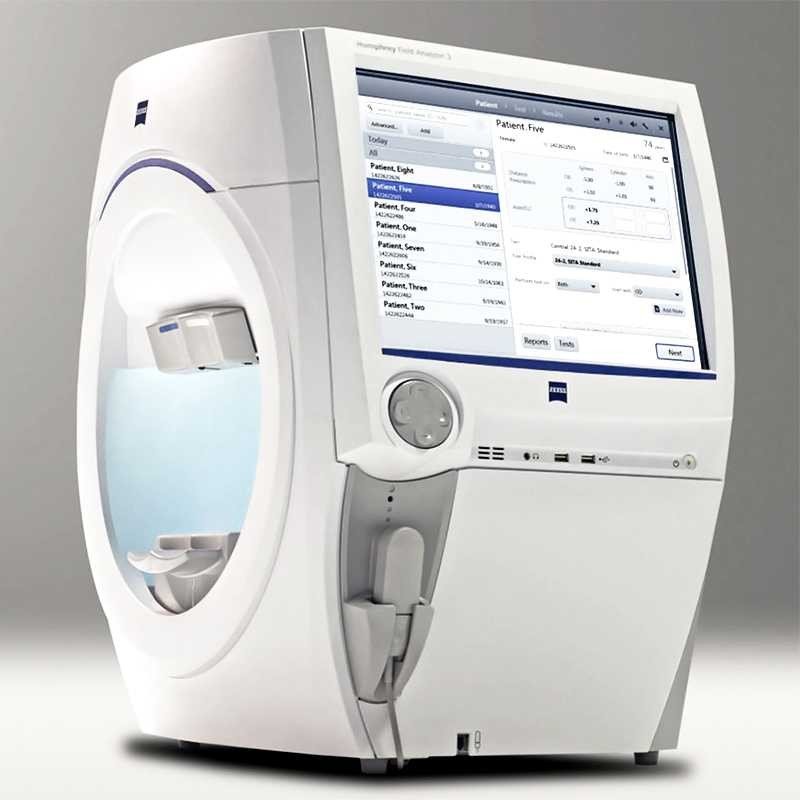
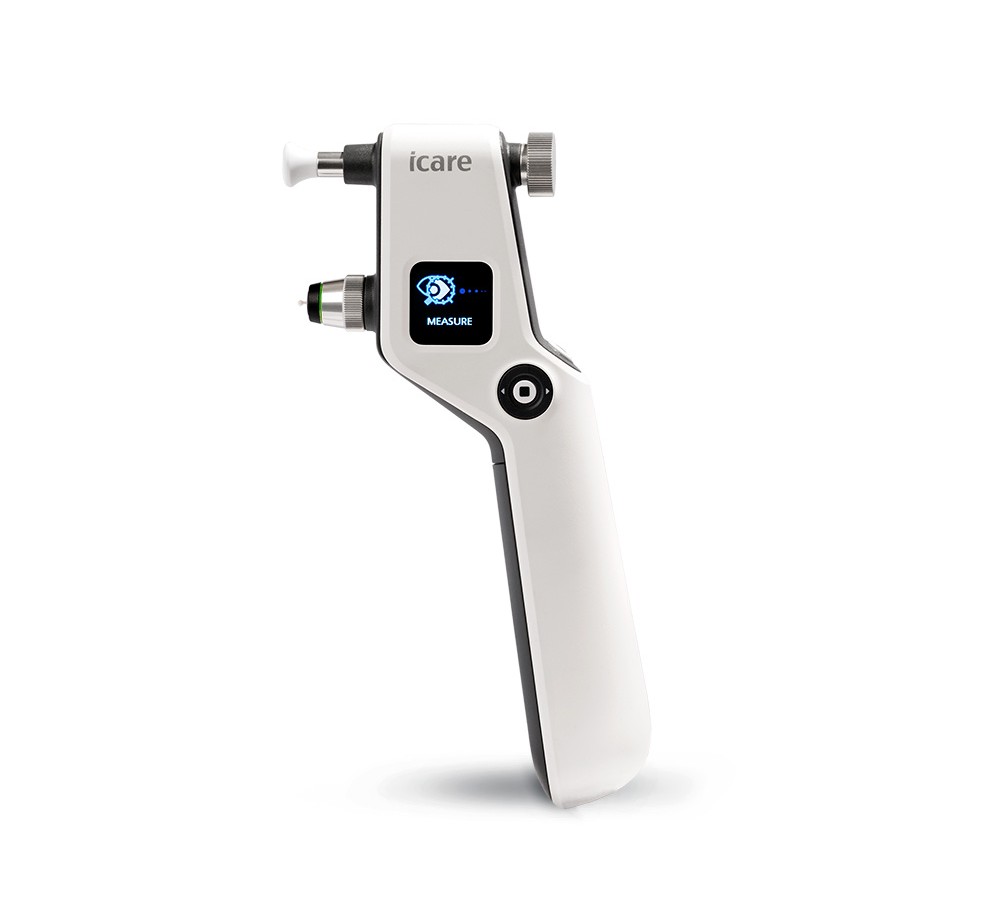
iCare Contact Tonometer
An iCare Contact Tonometer measures the pressure inside your eye, which is called intraocular pressure (IOP). This test is used to check for glaucoma. Normal eye pressure is different for each person and is usually higher just after you wake up. Using the tonometer avoids doing the puff of air test, which patients can find uncomfortable.
Myah
- corneal topography including keratoconus screening
- Axial length measurement for myopia management
- Progression reports for both myopia and dry eye analysis
- Dry Eye assessment tools including meibography
- Growth curves for monitoring eye elongation and comparing to normal for age group.
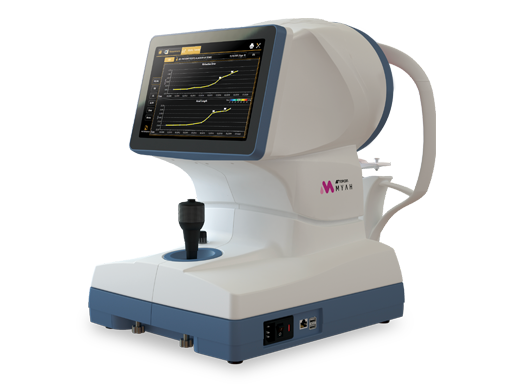
Eye examinations are the cornerstone of any opticians. Whether you are worried about a problem or just feel that you would like a check-up, Martin Johnson Opticians can offer you the individual service that you want, tailored to match your needs. Our eye examinations can pick up any problem you might have with your vision, and highlight areas which may be of future concern. And with our incredible Optomap® retinal scanner, we can diagnose problems within seconds.

